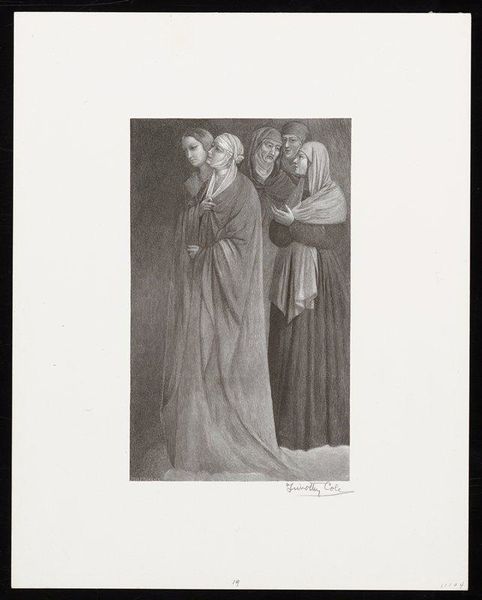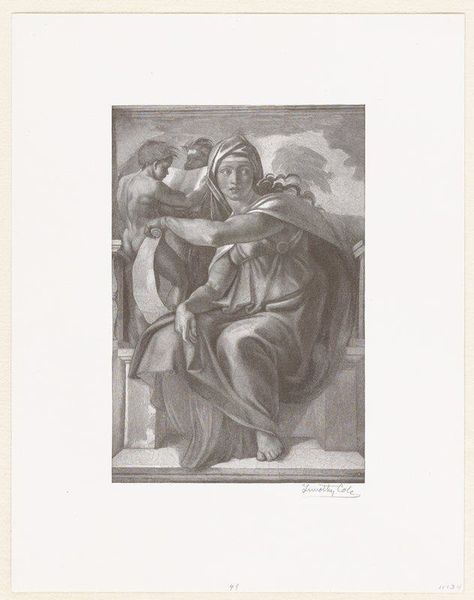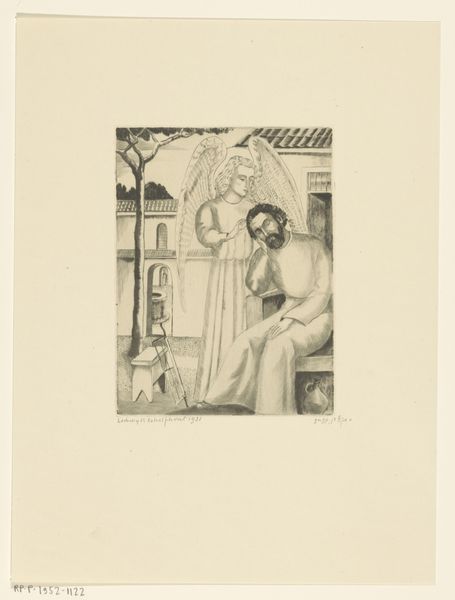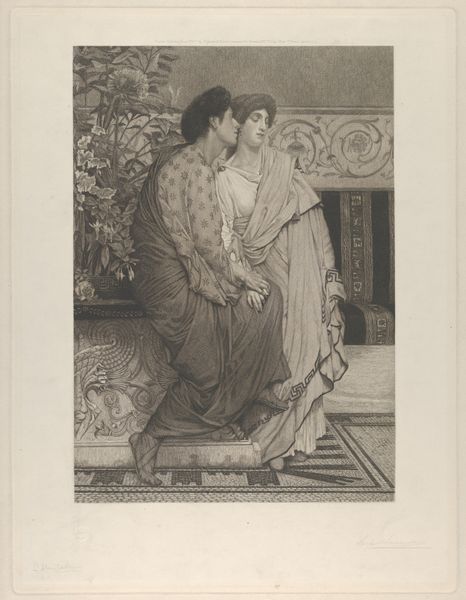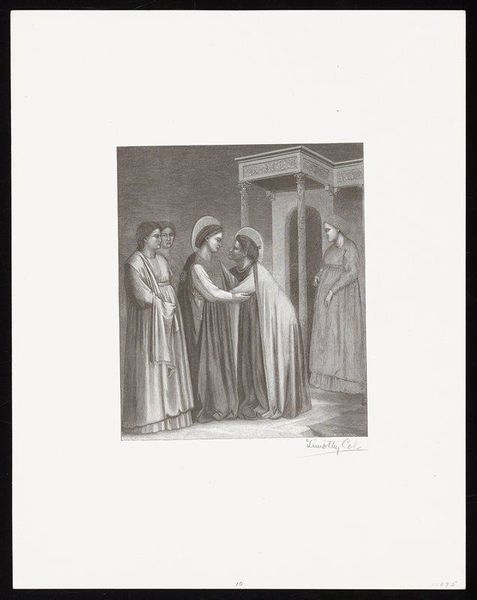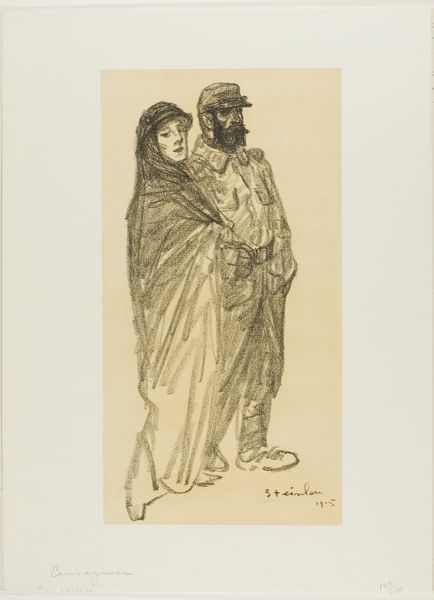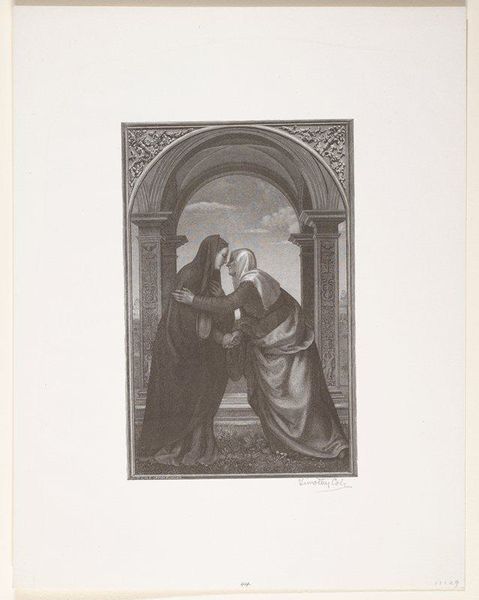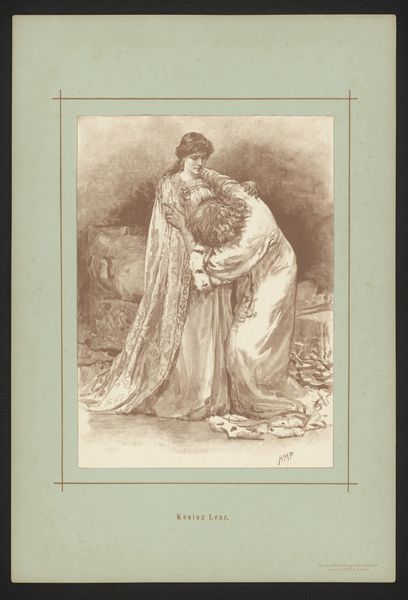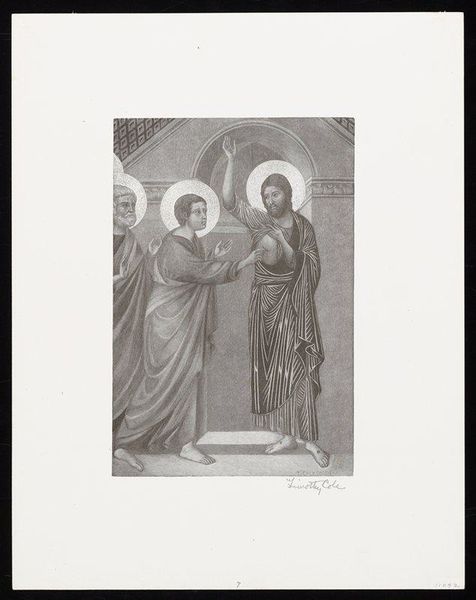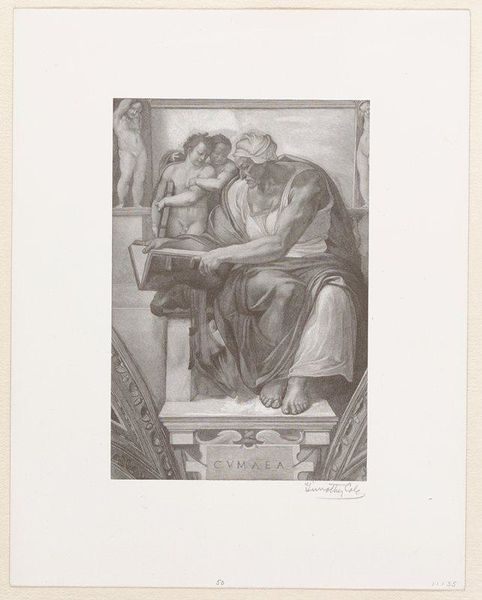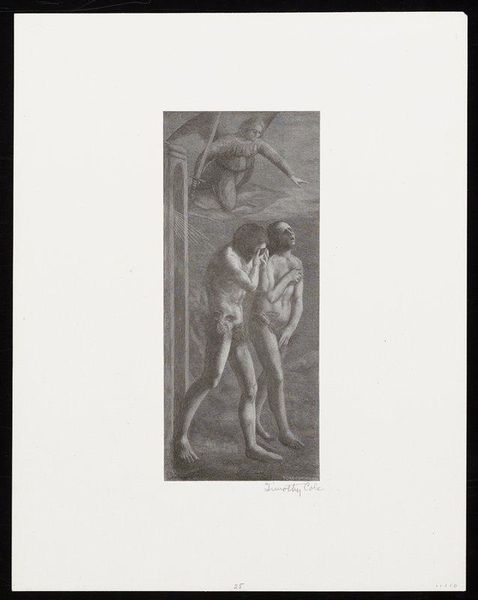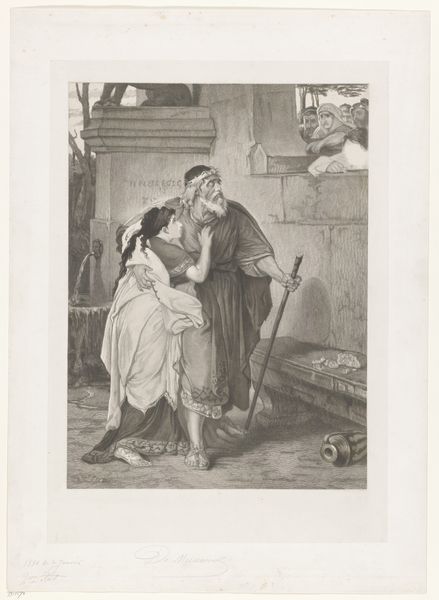
print, wood-engraving
portrait
narrative-art
11_renaissance
united-states
history-painting
wood-engraving
portrait art
monochrome
Dimensions: 7 5/16 x 5 3/8 in. (18.57 x 13.65 cm) (image)12 1/8 x 9 1/2 in. (30.8 x 24.13 cm) (sheet)
Copyright: No Copyright - United States
Curator: Let's explore "Visitation of Mary to Elizabeth," a wood engraving made in 1889 by Timothy Cole. It currently resides in the Minneapolis Institute of Art. Editor: It's austere, almost monumental, isn't it? The monochromatic palette and tightly interwoven figures create an intense sense of contained emotion. Curator: Absolutely. Cole was a master engraver, renowned for reproducing paintings and drawings. This particular print depicts a biblical scene, the meeting of Mary and Elizabeth, both pregnant, a moment brimming with anticipation and religious significance. It references well-known Renaissance depictions. Editor: What interests me is the laborious process of wood engraving itself. Each line, each shadow, meticulously carved away. Cole’s skill is undeniable, transforming a piece of wood into this incredibly detailed narrative. There's a social aspect too. Consider the communities of engravers, the workshops... How does this affect the accessibility and spread of religious iconography at the time? Curator: Exactly. Prints like these served a crucial role in disseminating art to a wider public. Consider that the illustrated press was exploding around this time, and Cole’s engravings provided a conduit for experiencing masterpieces previously confined to elite collections. His work brought religious themes into more homes. Editor: It begs the question of value though. Is it merely reproductive, or does the handcraft and meticulous labor imbue it with a distinct artistic value? Is Cole a mere copyist or something more? What kind of skilled labor is involved? Curator: That's a debate as old as printmaking itself! While a reproduction, Cole infused his work with interpretive choices. Note the subtle expressiveness he achieves in the women’s faces. His talent elevates this beyond mere duplication, imbuing the image with emotional weight that reflects late 19th-century sensibilities about religious feeling. The circulation of the image is evidence of its reach and popular interest. Editor: True. Thinking about the material reality of its creation and the skilled work of crafting the medium changes the way you consider its historical status, rather than approaching it as an interesting image to glance at. Curator: A powerful testament to the social force of art reproduction, certainly. Editor: Indeed, quite the feat of craft.
Comments
No comments
Be the first to comment and join the conversation on the ultimate creative platform.
